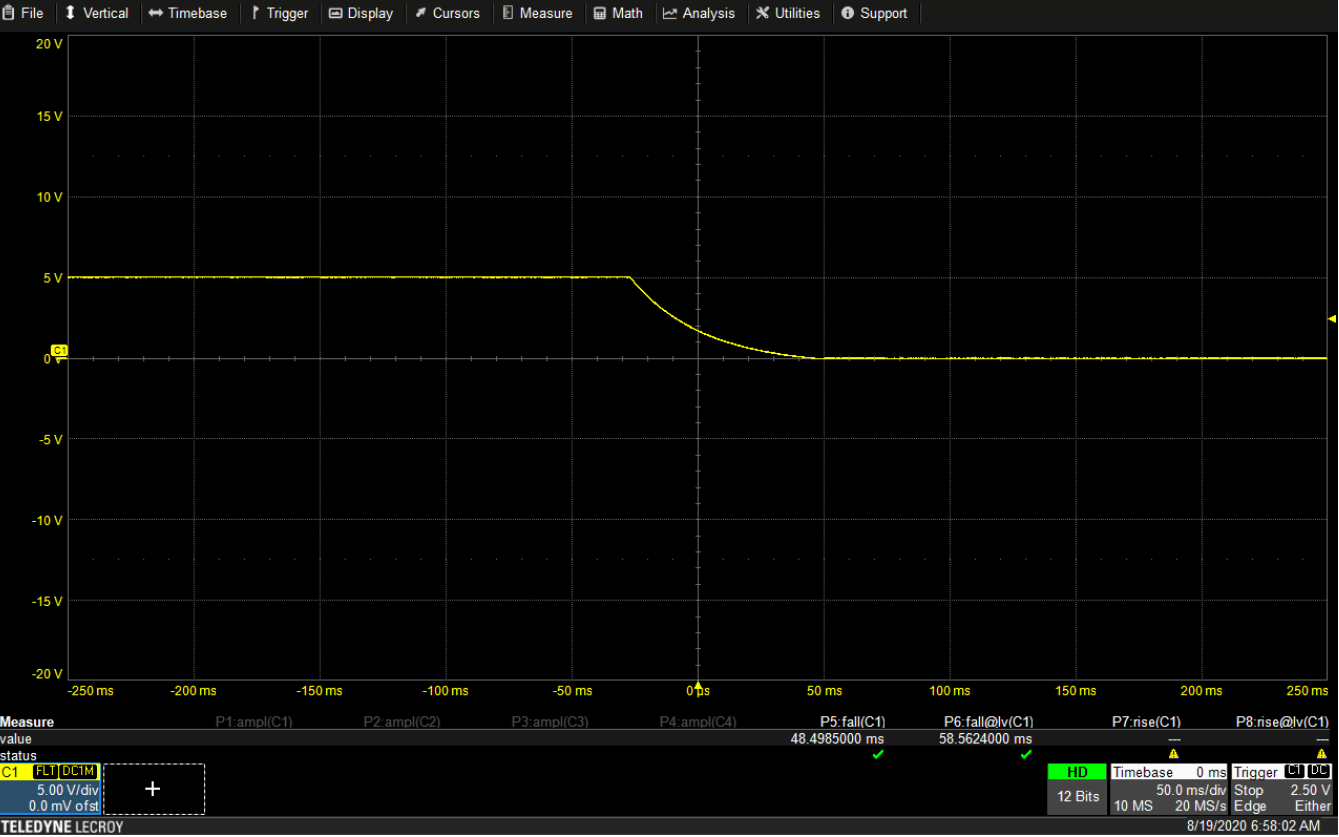I have this MOSFET Driver IC 16 Pin Package
Specification - Maximum Drain Voltage 16V. Maximum Drain Current 7.5A
EDIT:
Schematic :
 All the Enable, Sen and Sel signals will be provided by a separate MCU. MCU Datasheet
But the below tests are done by isolating the Microcontroller section and giving the signals separately from a power supply and monitoring the output behaviour at the load and the output at the multisense pin.
All the Enable, Sen and Sel signals will be provided by a separate MCU. MCU Datasheet
But the below tests are done by isolating the Microcontroller section and giving the signals separately from a power supply and monitoring the output behaviour at the load and the output at the multisense pin.
I am giving an external 5V Input to the MOSFET Gate (at pin 1) from this 30V 3A/6A Power Supply - Power Supply Datasheet
So, I am giving 5V to the gate from the power supply and 16V to the drain of the MOSFET (TAB = Vcc) from another similar power supply. I Connected a load of 7.5A between the output pins of the IC (pins 9 -16) to ground. (Electronic Load Used - Constant Current)
I turn ON and turn OFF the gate voltage to the MOSFET. But When I turn off the 5V input to the MOSFET, I am getting voltages like this (Observing strange switching behaviour during falling):
If Drain Voltage Vcc = 16V
However, If I reduce the drain voltage to Vcc = 9V
The I get this,
I am not able to understand why this behaviour is occuring when I give High Vcc to the IC.
Then, to check the fall time of the power supply (the channel which was connected to the enable gate of the IC)
Fall time was very high. Like in the order of 50ms.
Then, I gave the Input to the gate of the IC using AFG1062 a function generator.
I checked the fall time of the FG. It was around 1ms.
So, now I gave the gate input using the FG itself and set the drain voltage Vcc to 16V using another power supply.
Now, I am not getting the strange switching behaviour during the gate disable time.
My questions :
Why did I get that strange switching behaviour during the fall duration when I used the Power Supply instead of FG? I figured that I could solve the problem if I provide low fall times to the gate input of the IC. But what is happening if I give a fall time so high in the order of 50ms? I tried to look up the fall time or the voltage droop parameter in the power supply manual, but I could not find it. Can someone explain me why this is happening and how to understand this behaviour? What should I look for over here?
Why that strange behaviour was occuring only at Vcc = 16V and not when Vcc = 9V?
Why do the power supplies have high rise time and fall times when compared to an FG? What actually determines the value of rise and fall time in general electronics as well?
Please help me to clarify my doubts.






